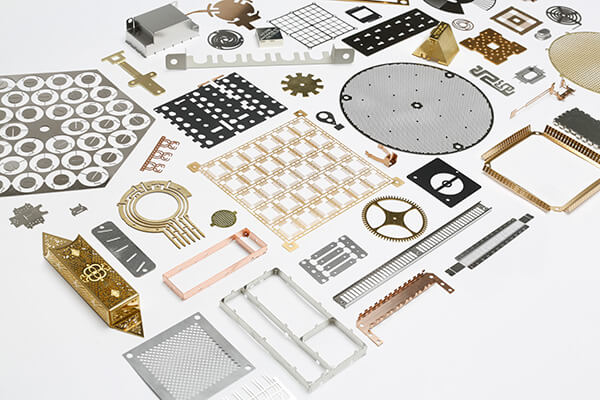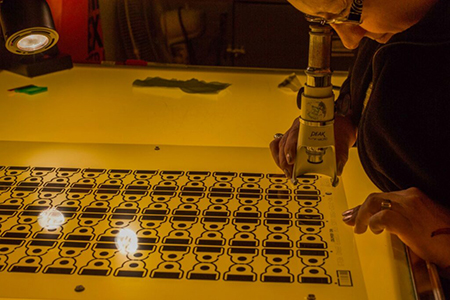This website uses cookies so that we can provide you with the best user experience possible. Cookie information is stored in your browser and performs functions such as recognising you when you return to our website and helping our team to understand which sections of the website you find most interesting and useful.
How Photochemical Etching Fits within Design for Manufacturability
The effects of the pandemic can still be felt by manufacturing as the current supply chain remains unstable and companies struggle to find alternatives to support customer demand.

According to a recent ING article, shortages are continuing across sectors, and among the price increases “industrial metals stand out with more than 70% increase relative to pre-pandemic levels.”
“These challenges put inflationary cost pressure on our and many businesses and, as the market is anticipating, will put further inflationary pressure on transportation rates in 2021,” said Shelly Simpson, chief commercial officer for J.B. Hunt Transport Services, on an earnings call reported by the Washington Post.
To alleviate some of the volatility and uncertainty within the industrial supply chain, OEMs should consider integrating photochemical etching within their process when designing for manufacturability (DFM) of precision metal parts.
Around 70% of manufacturing costs of products are derived from design decisions involving materials and method of production. DFM optimizes all functions of a manufacturing process at the best cost option with high quality and reliability by:
- Standardizing parts and reducing inventory.
- Simplifying product design and minimizing the assembly process.
- Resolving assembly issues with modular upgrades.
- Reducing setup times and the number of operations/processes to improve tools, workstations, and workflows.
- Remedying influences that impact product manufacturing such as the nature of raw material.
Maximizing Design for Manufacturability Benefits with Photochemical Etching
Photochemical Machining (PCM), or chemical etching, is a subtractive metal fabrication alternative for production of critical parts. The technique falls within the rapid prototyping classification. It uses temperature-regulated chemicals and a photoresist to define selective material removal on a conveyor-style etching machine.
PCM answers the demand for low-cost, burr-free parts including hardened metals. The essential value of photochemical etching as used in design for manufacturability lies in production speed, design flexibility, and part repeatability.
It places no limit on the complexity of a part’s configuration other than the size of the etched features relative to the thickness of the material. Regarding critical parts, chemical etching does not negatively affect the integrity of the metal, nor does it compromise the performance that could lead to catastrophic failure.
Production Speed for Design for Manufacturability
Compared to other metal fabrication methods such as stamping, PCM does not require much setup or tooling changes for complex geometries, which can affect the production speed of complex parts and overall costs.
Stamping uses hardened steel dies in the exact shape of the part. The dies can take months to create and cost hundreds to thousands of dollars. Any design changes would require extra time to create a new die, further increasing costs of overall production. Significant production volume is required to justify the expense of hard tooling for stamping.
With chemical etching, a phototool replaces the conventional steel tools. From a computer-aided design (CAD) drawing, blueprint, or napkin sketch, a modified file of the design is plotted onto mylar sheets in less than a day (often less than an hour) depending on the design requirements. Standard lead times fall between 5 and 7 days, and design changes can be implemented quickly by changing the design of the tool.
Digital imaging technology has also increased production speed in chemical etching. Using solid-state UV LED lighting to directly plot an image onto the photoresist with front-to-back registration accuracy, both time and cost of production is substantially decreased.

Design Flexibility for Manufacturing
In terms of design, part complexity does not lead to increases in cost with photochemical machining making it a suitable process for R&D, prototyping, and medium- and high-production runs. PCM does have some design limitations regarding part size and material thickness. The size of a part is limited to the size of the panel that can be handled through a job shop’s etching process. It is most economical to plan the largest sheet size consistent with the size and dimensional tolerances of the part.
DFM Part Repeatability
Chemical etching can produce complex parts with the smallest of features at tighter tolerances consistently and at faster rates compared to other methods of metal fabrication. Prototype and production quantities can be made using the same process and tooling resulting in shorter lead times and lower costs.
Extremely thin metal can be machined without distortion, and the physical properties of the metal (hardness, strength, and formability) are not changed by the process. Even magnetically soft metals retain their optimum permeability when photochemically etched.
Photochemical etching provides proactive design opportunities for custom parts without reducing their complexity, quality, or performance. PCM is consistent, cost-effective, and can scale as demand increases, which is difficult with other processes, where scale and complexity generally result in increased costs.
It’s important for manufacturers to communicate with customers what the limitations and constraints are of chemical etching so they can decide if it is the right process for their product(s).
To learn more about chemical etching and determine if it is the right process for your project, download our whitepaper and contact us today to see how we can be a part in your plan.

